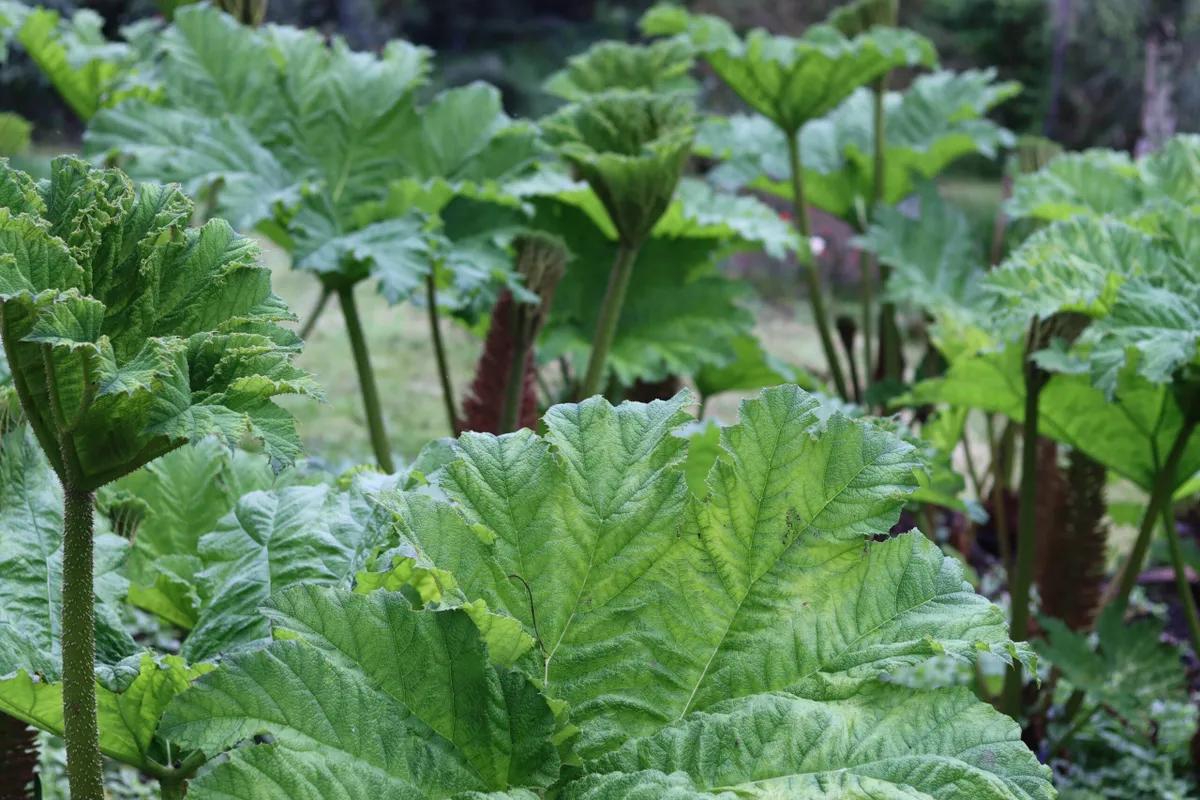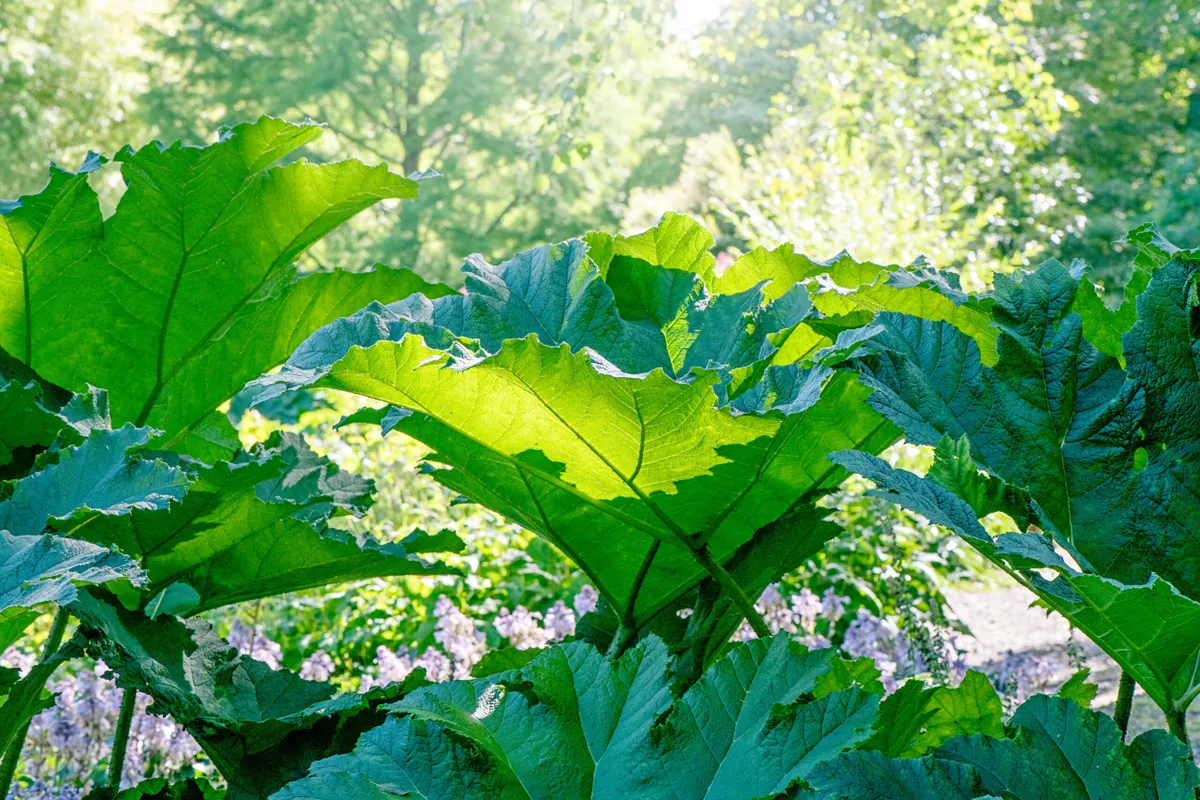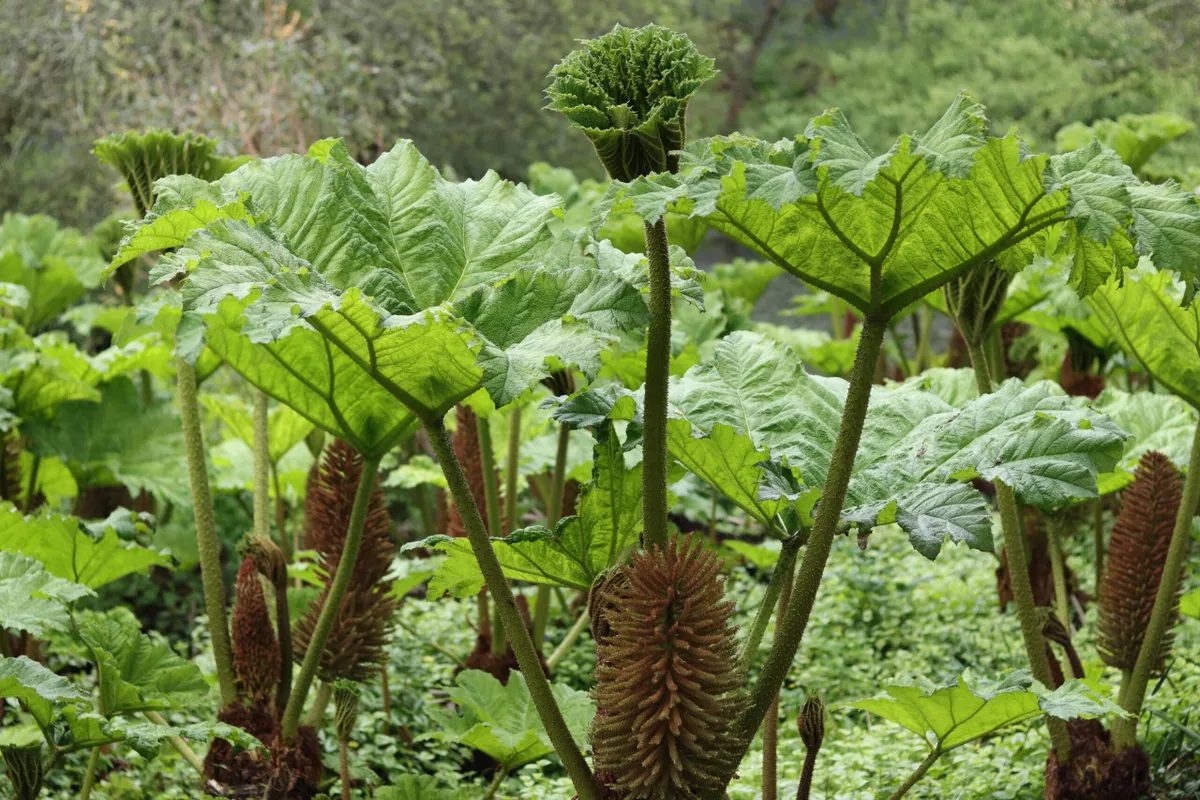The UK Government is banning the sale and cultivation of giant rhubarb, or Gunnera, following the discovery vigorous new hybrid that has been growing undetected in gardens for many years.
You may also like
- Total ban on peat in gardening won't happen until 2030
- Discover Beth Chatto's Gardens
- The best water gardens to visit
- Invasive plants: Here's what not to plant and how to avoid a fine
Until now, it has been believed that the large Gunnera plants growing in the UK were either Gunnera manicata or Gunnera tinctoria. Gunnera tinctoria was listed as a species of special concern in 2017 and a species of special concern under the Invasive Alien Species (Enforcement and Permitting) Order 2019, which makes an offence of planting or otherwise causing Gunnera tinctoria to grow in the wild.
However recent research by the RHS has found that plants thought to be Gunnera manicata are actually a hybrid of Gunnera tinctoria, which has been named Gunnera x cryptica. Offences that apply to a listed invasive plant also apply to its hybrids. A spokesperson from Defra (the Department for Environment, Food and Rural Affairs) told us: “Gunnera tinctoria is an invasive species that can impact native biodiversity. The species is banned under the Invasive Alien Species (Enforcement and Permitting) Order 2019 – this ban includes all hybrids of Gunnera tinctoria.”
Jump to
- More on why gunnera is banned in the UK
- What to do if you have gunnera in your garden
- What's a non-native/invasive plant
- What does a gunnera ban mean for nurseries?
Gunneras are much loved for their huge, exotic-looking leaves that can measure up to 4m in height in summer. Introduced by the Victorians, these moisture-loving bog plants are a familiar sight in many historic gardens, parks and botanical collections, and are often found growing alongside lakes, ponds and streams. Their ban will have implications for historic gardens, nurseries and gardeners.
I have a gunnera in my garden. What should I do?

Defra’s public guidance states that no offence is committed if a listed plant is growing in your garden or on your land. So you’re not committing an offence if you have a large-leafed Gunnera on your property. However, you cannot intentionally plant listed species on your land or intentionally cause existing listed plants to spread, or sell, use or exchange any listed species.
Read more about Defra's advice on invasive plants
Guy Barter, chief horticulturalist at the RHS, explains: "It is not illegal to grow Gunnera and if it poses no risk of spread, it can remain. Where it poses a risk of spread, near streams, say, or in areas of boggy ground, it would be best to eliminate it, taking care to destroy it by burning or composting all plant material in the garden, or less environmentally soundly by adding to landfill waste. Where this not feasible, removing seedheads before seed matures would be a good practice."
Reports in the press have suggested watering plants on dry soils amounts to "cultivation", but Guy says: "The notion of withholding water to kill existing Gunnera can be disregarded as a journalistic misinterpretation."
Small species of Gunnera, such as Gunnera magellanica (devil's strawberry), a marginal pond plant, will not be affected by the ban.
Why is the new Gunnera ban being imposed?

Until now, it has been believed that the large Gunnera plants growing in the UK were either Gunnera manicata or Gunnera tinctoria. Both plants were introduced in the 1800s. Gunnera tinctoria was listed as an invasive non-native plant in 2017 as it has become a serious problem in wetter areas such as the west coast of Ireland and Scotland, but Gunnera manicata, which hails from Brazil, was not considered problematic - until now.
Recent studies by the RHS, which involved molecular and morphological analyses, as well as a historical investigation, revealed that Gunnera manicata appears to have been lost from cultivation not long after it was introduced in the 1860s. In its place, the researchers found a hybrid between Gunnera manicata and Gunnera tinctoria, which has been named as Gunnera × cryptica. The researchers concluded that all large-leaved Gunnera species in Britain and Ireland today are either Gunnera tinctoria or Gunnera × cryptica, the previously overlooked hybrid plant.
The two parent species and the hybrid look very similar, which may explain how the hybrid went undetected for so long. As Gunnera manicata disappeared from cultivation, gardeners were unknowingly selecting the hybrid plant as it was hardier and more vigorous. DNA research conducted by scientists at the RHS has now uncovered the true identity of the plants. The RHS will now be changing its advice to gardeners concerning Gunnera manicata, which may either be the hybrid or Gunnera tinctoria.
Read more about why plant names keep changing
What is an invasive non-native plant?

There are over 35 plants that are deemed to be invasive non-native plants in the UK as they spread rapidly and threaten ecosystems, habitats or native species. They include Japanese knotweed, Himalayan balsam, water hyacinth and giant hogweed. It will be an offence to sell or plant Gunnera tinctoria and Gunnera × cryptica or cause them to grow in the wild.
Find out more about the Government advice on invasive non-native plants
Here's our guide to invasive non-native plants
What does the Gunnera ban mean for historic gardens and plant nurseries?
Currently the law prohibits the importation, selling and cultivation of any hybrids of a listed invasive species and therefore the discovery of Gunnera × cryptica means that there will be significant implications for the horticultural industry and plant collections in the UK.
The RHS is in the process of identifying any Gunnera x cryptica plants within its five gardens and where it feels there is a strong case to retain the plants, will be positioning appropriate information nearby to explain the status of the plants and advise gardeners not to plant it in their gardens. It is also removing any plants labelled as Gunnera manicata from its garden centres.
At Logan Botanic Garden, one of the four sites of the Royal Botanic Garden Edinburgh (RBGE), a magnificent, giant canopy of Gunnera delights visitors. The garden provided data and samples, including Gunnera tinctoria wild-collected in Chile, to support the recent RHS research, which was published in RBGE’s own Sibbaldia journal.
"While Gunnera has been grown at Logan since 1959 and we have not found it to be invasive, we will continue to carefully monitor UK guidelines on the management of Gunnera tinctoria and Gunnera x cryptica, acting where necessary," says Curator Richard Baines. "Forming part of the National Collection, Gunnera x cryptica at Logan is one of the largest stands of this species in the UK and is hugely popular with visitors. As such, it provides us with opportunities to engage visitors in conversations around invasives of all kinds."